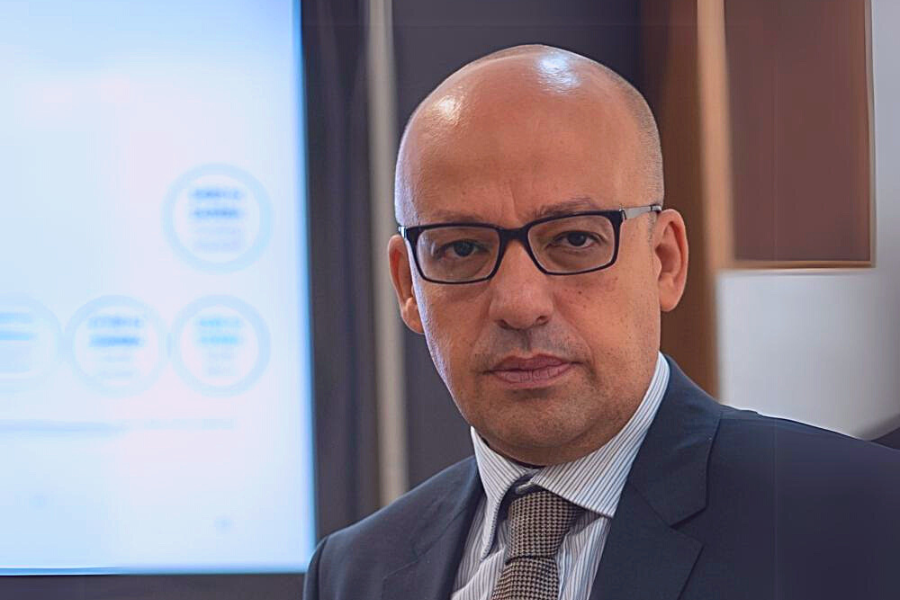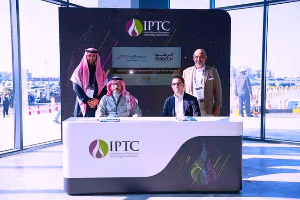Charting the Course to Clean Energy – an interview with Herald Bonnici, Founder & Managing Consultant of HB Advisory

In the energy landscape, progress demands a delicate dance of innovation and collaboration. From boardrooms to conference halls, Herald Bonnici navigates diverse sectors, witnessing the potential held within a tapestry of technologies - green hydrogen, energy storage, and smart grids.
These are not mere strands; they are the building blocks of a sustainable future, ready to be assembled with vision and purpose. Bonnici's expertise lies in understanding their interplay, in guiding their integration to chart a clear course towards a clean energy horizon.
Herald Bonnici is the Founder & Managing Consultant of HB Advisory moderating two panels, financing for power projects and the COP28 conclusions. Building on a diverse career spanning public and private sector leadership, private equity and venture capital, public private partnerships, and board positions across trade finance, immersive experiences and energy, Herald Bonnici brings a wealth of experience to the table.
Energy & Utilities: Given your diverse board positions, how do you see different technologies like energy storage, green hydrogen, and smart grids interacting to facilitate the energy transition?
Herald Bonnici: The transition to green energy poses a set of unique challenges and opportunities as the energy supply chain needs to adopt to a new reality which sees a transition away from fossil fuels to renewable sources in line with the COP28 conclusions. Such transition entails a shift from a traditional production of energy, including electricity that is produced through fossil fuels to renewable energy sources, including solar, wind and green hydrogen. A steady supply of energy flow needs to be secured hence storage will see a greater shift from containing fossil fuels to energy itself. I believe that green hydrogen will accelerate the transition as similar to fossil fuels it is easier to store and allows for it to be subsequently used at a later stage. It is also versatile, being able to be transformed into electricity or synthetic gas and used for commercial, industrial or mobility purposes.
E&U: From your perspective, what challenges and opportunities remain in optimizing the integration of renewable energy sources into existing power grids to ensure grid stability?
HB: The integration of renewable energy sources into existing power grids is a complex process that presents both challenges and opportunities. Renewable energy sources such as solar and wind power are variable and intermittent, which can cause instability in the grid. To ensure grid stability, it is necessary to develop new technologies and strategies to integrate renewable energy sources into the grid or produce green energy sources that can be stored easily and used at a later stage, eg. green hydrogen.
According to a report by the International Renewable Energy (IRENA) the integration of renewable energy sources into power grids requires specific measures which include a substantial transformation of the grid systems allowing a) a bi-directional flow of energy, b) establishing an efficient electricity-demand and grid management mechanisms aimed at reducing peak loads, improving grid flexibility, responsiveness and security of supply in order to deal with increased systemic variability, c) improve the interconnection of grids at the regional, national and international level, aimed at increasing grid balancing capabilities, reliability and stability, d) introduce technologies and procedures to ensure proper grid operation stability and control (e.g. frequency, voltage, power balance) in the presence of a significant share of variable renewables, and e) introduce energy storage capacity to store electricity from variable renewable sources when power supply exceeds demand and aimed at increasing system flexibility and security of supply.
In addition, the use of smart grids and advanced forecasting tools also allows a better integration of renewable energy sources into existing grids.
E&U: Your experience with sovereign wealth funds and institutional investors is valuable. How can these entities be incentivized to invest in large-scale energy storage and renewable energy projects, particularly in developing countries?
HB: The United Nations Climate Change states that developing countries are hungry for electricity but that the development of conventional, fossil fuel-based energy has a heavy environmental cost. Small and medium-sized renewable energy and energy efficiency projects have the potential to help such countries reach their energy needs sustainably but these projects struggle to attract capital from private investors, which lack structured routes to finance them. Furthermore, many private investors have a limited appetite for emerging markets and sector-focused funds.
Sovereign funds and institutional investors can be incentivized to invest in large-scale energy storage and renewable energy projects in developing countries through various measures. Primarily, it is important to demonstrate to them the benefits of investing in large-scale energy storage and renewable energy projects and the anticipated returns in addition to exit routes. Another aspect worth considering is risk mitigation where it is important to reduce the risk associated with investing in developing countries by providing political risk insurance and guarantees. Also, it is important to promote investment into a number of large-scale projects amongst a diverse pool of investors which seek long-term returns. Needless to say, these investors would require that such projects are run by professional people with an established track record, encompassing the technical and commercial side to business, in addition to enhanced corporate governance structures that safeguard the interests of investors.
It is also important to demonstrate the potential benefits of investing in renewable energy projects in developing countries. These benefits include reducing greenhouse gas emissions, improving energy security, and creating new jobs in the renewable energy sector. By highlighting these benefits, sovereign funds may be more likely to invest in renewable energy projects in developing countries. Governments can provide additional incentives, such as fiscal benefits including tax breaks, etc.
Furthermore, it has suggested that sovereign wealth funds can play a key role in financing renewable energy projects in developing countries by investing in fund-of-funds that invest in small- and medium-sized renewable energy and energy efficiency projects.
E&U: As Secretary General of the Private Equity and Venture Capital Association Malta, what promising new clean energy technologies or business models are attracting investor interest currently?
HB: There are several promising new clean energy technologies and business models that are attracting investor interest currently. According to a report by Oliver Wyman the total global Venture Capital funding in clean energy startups has increased dramatically over the last three years, growing more than sixfold from $1.9 billion in 2019 to $12.3 billion in 2022.
The report states that in particular battery technology, in particular, has received such large investments. When it comes to batteries, new technology is needed to enable large-scale decentralized storage and expand the availability of renewable energy on a less intermittent basis. In 2022, $5 billion was invested in battery ventures. It adds that two-thirds of global VC energy funding in 2022 was invested in batteries and renewables. It was reported that, for instance, investment in renewables technology tripled from $1 billion in 2021 to $3 billion in 2022.
Other technologies that are attracting investor attention include fusion, green hydrogen, carbon capture in addition to technologies developing tools for emissions data collection and analytics in addition to innovative technologies and solutions that would mainstream green energy approaches to increasing energy efficiency, helping with decarbonization efforts, and stemming the rise in energy costs for businesses and consumers.
E&U: Beyond networking and staying updated, what advancements in renewable energy technology are you particularly eager to witness at Middle East Energy and Africa Energy Expo, and how do you see them shaping the future of energy in the region?
HB: On a personal level I am particularly keen to witness developments with floating solar panels and offshore wind turbines, green hydrogen and perovskite solar cells which have gained significant attention and popularity in recent years due to their potential for high efficiency and low cost compared to traditional silicon solar cells. In addition, I am also looking for advancements in tidal and wave energy.
On a regional basis, the Middle East has been a major contributor to the global oil and gas industry for decades. However, in recent years, there has been a shift towards renewable energy sources in the region. The shift towards renewable energy is driven by several factors, including the need to reduce carbon emissions, diversify energy sources, and increase energy security. The region has abundant solar and wind resources, making it an ideal location for renewable energy projects.
The Middle East's energy landscape is anticipated to be significantly impacted by the move towards renewable energy. It will support sustainable development, generate new employment opportunities, and lessen the region's reliance on fossil fuels. Overall, it is anticipated that developments in renewable energy technologies will influence Middle Eastern energy policy going forward by fostering sustainable growth, lowering carbon emissions, and boosting energy security.
E&U: The April conference theme is "Driving the power sector transformation forward." What specific topics or case studies do you think will be most relevant and impactful for attendees?
HB: I am particularly interested in a number of sessions, including green hydrogen, EVs and the COP28 conclusions in addition to entrepreneurship, SMEs and local development in the GCC utilities sector. Naturally the financing of projects, as an enabler, is always a cross-cutting theme.
E&U: As someone with such diverse experience and wide-ranging interests, where do you see the most exciting innovations and potential for disruption in the energy sector in the next five to ten years? From your perspective, what key shifts or breakthroughs are necessary to truly accelerate the transition to a sustainable energy future, and what role do you envision yourself playing in this transformation?
HB: McKinsey reports that the demand for fossil fuel is expected to peak in the coming years by 2030 but that the outlook remains unclear. Although a sharp decline in coal demand is expected under all scenarios, natural gas and oil are expected to grow further in the next few years and then remain a core part of the world’s energy mix for decades to come. Total natural gas demand to 2040 is projected to increase under most scenarios, driven in large part by the balancing role that gas is expected to play for renewables-based power generation until batteries are deployed at scale. For oil, total demand is projected to continue growing for much of this decade and then to fall after 2030. Renewables will make up the bulk of the power mix by 2050.
At the same time the energy sector is undergoing rapid transformation, with new technologies and innovations emerging every day. The following are some of the most promising innovations in the energy sector that could disrupt the industry in the next five to ten years:
- Green hydrogen: Green hydrogen is hydrogen created using sustainable energy sources like solar and wind power. It might take the place of fossil fuels in a number of industries and transportation-related fields.
- Energy storage: As the amount of renewable energy in the grid rises, energy storage technologies like batteries and pumped hydro storage are becoming more and more significant. They contribute to maintaining grid stability and balancing the supply and demand of power.
- Smart grids: To optimise the production, distribution, and consumption of electricity, smart grids make use of cutting-edge sensors, communication networks, and analytics. Energy waste can be minimised, grid dependability can be increased, and the integration of renewable energy sources may be made possible.
- Electric vehicles: As a result of favourable government regulations and falling battery prices, it is anticipated that the number of electric vehicles will rise sharply in the upcoming years. The energy industry will be significantly impacted by this as it would raise the need for electricity and necessitate the construction of new infrastructure for charging.
- Carbon capture, utilisation, and storage (CCUS): These methods employ subterranean storage or other uses to absorb carbon dioxide emissions from industrial activities. They have the capacity to drastically cut the energy sector's greenhouse gas emissions.
These are just a few examples of the exciting innovations and potential for disruption in the energy sector in the next five to ten years. The energy sector is constantly evolving, and it will be interesting to see how these technologies develop and shape the future of energy.
The transition to a sustainable energy future requires a combination of technological, economic, and social shifts. According to the World Economic Forum the energy transition is not keeping pace with the growing urgency for change. In my view some elements that would truly accelerate the transition to a sustainable energy future include a steady increase in investment in renewable energy, energy storage, smart grids, and changes in the regulatory landscape including carbon pricing that puts a price on carbon emissions to incentivize companies to reduce their carbon footprint and hence accelerate the transition to a low-carbon economy. With electric vehicles the issue of range anxiety would also need to be addressed.
I am excited to be part of this transition and my role would be to champion this transition and promote sustainable investing, leveraging my experience in both the public and private sector and matching opportunities.
Building a Sustainable Future, Brick by Brick
The path to a clean energy future is paved with challenges and opportunities. Herald Bonnici navigates these complexities by advocating for increased investment in renewable technologies, policy changes that incentivize clean solutions, and fostering collaboration across industries. As these efforts gain momentum, the foundation for a sustainable future is laid. Brick by brick, a world emerges where green hydrogen fuels mobility, storage solutions address renewable volatility, and smart grids orchestrate the flow of clean energy. Bonnici's vision shines a light on this potential, where these technologies are not just a glimpse of the future, but the building blocks of a thriving, green economy.
Middle East Energy, the region's most anticipated energy event is all set to be back with its 49th edition, running from the 16th to the 18th of April 2024 at Dubai World Trade Centre.
The flagship energy event of the year will be the epicenter of opportunities for energy professionals from all over the world! And keeping in line with COP28, Middle East Energy 2024 will be bigger, better, and more focused on sectors that will cater to your energy needs.
This year Middle East Energy advocates how renewable energy, energy storage and digitalization are key to optimizing the region’s power ecosystem and ensuring self-sufficiency. Register now!
Energy & Utilities - Middle East and Africa Market Outlook Report 2024.
This must-have report for industry players offers a thorough understanding of the latest developments, challenges, and opportunities in the region, supported by data, analysis, and expert insights.


.png)







